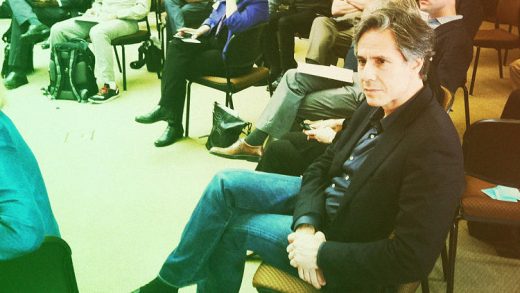Can Silicon Valley help The State department observe Weapons Of Mass Destruction?
The Paris and Brussels assaults got a lot of people fascinated by dirty bombs. in the end, what if the ISIS perpetrators had obtained a radiological weapon? top U.S. officials have concerned about nuclear terrorism ever for the reason that Soviet Union collapsed and its warheads threatened to roll away into unsavory arms. certainly, just last month, on the international Nuclear security Summit, President Obama asked fellow world leaders to contemplate that very prospect. but the U.S. executive is also looking to Silicon Valley, and the innovation neighborhood as a complete, to assist come up with solutions to this frightening downside—and a host of alternative difficult concerns.
ultimate week, contributors of the State department descended on Stanford college to host a daylong brainstorming session on how to contain all varieties of weapons of mass destruction, together with nukes. The 150 individuals who confirmed up were a far more eclectic group than you’d find at a standard WMD confab. wireless executives hobnobbed with felony investigators. Analysts from microsatellite companies traded industry cards with military officers. data-mining specialists rubbed elbows with one of the vital world’s top disarmament officials.
keeping monitor of warheads was reasonably easy. just a few countries had them, and so they tended to stay tucked within large missiles. if you knew the place the missiles were, you knew where the nukes had been. It was no cakewalk, but the U.S. felt reasonably assured monitoring Soviet militia movements from house.
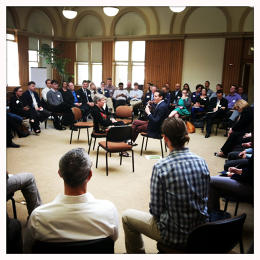
Now, on the other hand, it can be doubtlessly a lot more straightforward to build a radioactive bomb the scale of a suitcase. keeping monitor of all the “sizzling” stuff, that can be damaged down into smaller pieces, is a fundamentally totally different puzzle than realizing methods to spot big Russian vehicles. the subtle containment system the sector spent decades establishing isn’t appropriate to this new problem. which is why some excessive-ranking officers—including Rose Gottemoeller, the State department’s underneath secretary for fingers regulate and international safety—are embracing the notion that one of the most best possible concepts on easy methods to tackle the brand new challenge might come from individuals who’ve by no means heard of terms like “isotopics” or “dismantlement queue.” “If Amazon prime can track billions of small objects,” Gottemoeller advised the gang at Stanford, “there’s no reason we will’t determine tips on how to better monitor WMDs.”
The workshop was the most recent project in a bigger innovation jag spearheaded via Deputy Secretary of State Antony Blinken. Floppy-haired, blues-guitar-loving Blinken stepped into his new position early final 12 months because the 2nd-in-command on the State division. along with his formal responsibilities, a deputy will get to champion a couple of pet tasks. For Blinken, building bridges to the tech neighborhood has turn into one of those areas of focal point. “I’ve spent 23 years in govt,” he instructed me at a sunny campus café no longer a ways from the workshop. “more and more, it used to be becoming evident that many of the problems we were trying to clear up were on the intersection of international policy and know-how.” The soiled bomb difficulty is a major example—it takes diplomacy to coordinate different governments in the struggle in opposition to terrorism, and technology to track such arduous-to-trace weapons.
Standing at a podium at Stanford, Blinken described how technological innovation is now as crucial to the State division’s work as its traditional focus on economics and political affairs—even though the division is not precisely fluent in tech. As Blinken put it, every so often it appears like “we want scientists and technologists within the room just to inform us whether we need scientists and technologists within the room.” that is why Blinken has instituted an “Innovation discussion board” on the State department, which works on convening gatherings like the WMD workshop, and which he hopes will inspire self-beginning, out-of-the-field-thinking, unconventional-resolution-producing innovators in the tech neighborhood to dedicate a few of their time and brainpower to tackling main world considerations.
as an instance, in January, the State department gathered a distinct staff, additionally at Stanford, to explore tips on how to educate the masses of heaps of Syrian youngsters now dwelling in refugee camps. with out schooling, those youngsters may have restricted economic alternatives in the future—and younger adults with restricted prospects are especially inclined, as Blinken put it at that gathering, to “the siren name” of terrorism. every other meeting, in big apple, explored FinTech. historically, the U.S. and its allies managed bad actors with the aid of slicing off their bank debts the use of antiterrorism regulations. however cryptocurrencies comparable to Bitcoin now let felony networks make end runs around such controls. a 3rd gathering in Washington sought new how to monitor adherence to ceasefires, comparable to the use of smartphones and geolocation for crowdsourced reporting of violence.
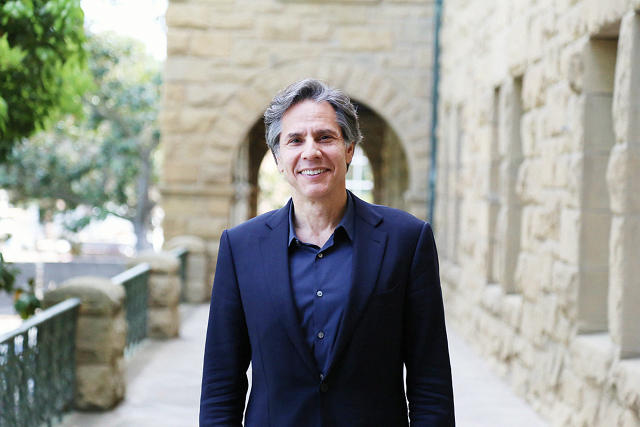
at the Stanford WMD conference, participants were damaged into small groups, where they dove into energetic exchanges about how sensors, information, and social media might lend a hand officers observe fissile subject material—and perhaps even assist determine, Minority record-model, when anyone might be planning an assault. some of the contributors, Brian MacCarthy, who not too long ago opened a strategic innovations administrative center for Booz Allen Hamilton in Silicon Valley, listened to the discussions—and used to be impressed. sooner than he moved out West, he worked inside of Washington, selling services and products to government businesses on behalf of a giant IT provider. “I was once in D.C. for 10 years,” he mentioned, “and i never may have gotten this kind of a conversation going.”
Blinken’s ideas fall consistent with a bigger push in Washington to construct extra bridges to the tech sector and leverage the trade’s inventive, can-do spirit to toughen the best way government operates. Hillary Clinton was once the first secretary of state to flip to the modern tech sector for help on the world entrance. The Pentagon opened an administrative center in Silicon Valley final yr, as did the department of native land safety. And, as this publication explored in depth final summer season, President Obama has made it a precedence to get all-star tech natives to do tours of responsibility throughout the halls of government.
still, engineering a cultural transformation at the State department is not simple. Washington, like every large, powerful establishment, can be set in its methods. “just the idea that of attempting new things is an uphill combat,” mentioned State division senior guide for tech and innovation Zvika Krieger in a cellphone dialog after the WMD adventure. Krieger informed me that, when he was once planning one of the most previous workshops, he invited some key D.C. stakeholders to participate—but “they have been very skeptical. Their standpoint was once, ‘We’ve by no means worked with tech earlier than, and we’ve been advantageous with out them.’”
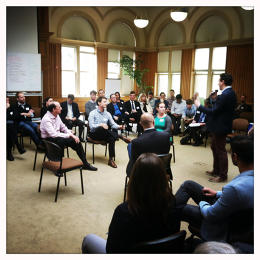
Krieger himself would not share that outdated-school orientation. he is a thirtysomething former journalist and innovation specialist who as soon as labored for Secretary of safeguard Ashton Carter again when Carter was once the number-two man at the Pentagon. Krieger is taking an iterative method to the workshops, designing successive events according to learnings from previous ones. “We’re prototyping how we approach Silicon Valley,” says Krieger, who at all times appears to have a merry twinkle in his eye. “We’re seeing which codecs work and what concerns we must engage on.”
the variation between conventional govt strategies and Silicon Valley methods were visually palpable at the WMD adventure. Nuclear security Summits, which take place biannually, are solemn conferences at which world leaders sit down stiffly around monumental round tables (that, satirically, and most likely unintentionally, endure an unlucky resemblance to the ominous battle room in Dr. Strangelove). the big convention room at Stanford, in contrast, was strewn with submit-it notes and Sharpie markers, and chairs had been pushed apart in choose of informal small-crew discussions.
by means of the top of the day, the teams came up with a handful of concepts—as an instance, testing how efficient crowdsourcing will also be at settling on nuclear websites in visible knowledge, or conserving a competition to look how neatly various sensing technologies could determine the presence of dangerous types of radioactive subject matter in a crowded house. The members were evidently excited by using the problem. “I’ve been engaged on some pieces [of my research] for 20 to 30 years,” said Kent Langley, a professor at Singularity university and a knowledge-science entrepreneur. one in every of his corporations has developed a platform that crunches massive amounts of information to foretell the intentions of possible buyers, so a company can better market to them. probably the most workshop small teams, in contrast, discussed how data can be crunched to figure out a possible terrorist’s intentions. The workshop, Langley said, made him notice his work might assist “save lives.” “Let’s do this!” he stated.
this is precisely what the State division is banking on. Blinken and Krieger know that single daylong classes can hardly hope to supply instantly actionable options, however they want to spread the message that the federal government not feels a want to continue a monopoly on solving these problems. Blinken’s workforce hopes top minds in the Valley and different innovation hubs will probably be impressed to take a stab at these large, gnarly questions. Their plan may well be working. just weeks after the workshop on Syrian schooling, some participants forged in advance on their own and tinkered with one of the most ideas born throughout the session, akin to the usage of cell phones for language instruction, or distributing tablets preloaded with instructional content material in refugee camps and recruiting solar firms to provide the panels wanted to power them.
this type of scrappy, just-dive-in response from Valley denizens offers Krieger hope. “In D.C., we’d have spent months battling totally different bureaucratic hurdles to get all of the different stakeholders to buy in,” he stated, “and we would have had to have the funds for it when so much of our money is apportioned years in advance.”
then again, Blinken and Krieger have valuable little time to make headway. Obama leaves office next January. even though a Democrat wins the White home within the fall, it’s standard practice for political appointees, like Blinken, to step down, so that incoming secretaries can bring in their own groups. Blinken’s “minimal achievable product,” then, is just to produce a credible proof of idea for his assembly-of-the-minds program. “My hope is that this turns into institutionalized by the time we depart,” he said. “And that whoever follows us needs to proceed it.”
photographs courtesy of E.B. Boyd, aside from the mushroom cloud (by means of Wikipedia) and the portrait of Antony Blinken (courtesy of William Russo, State department)



<img alt="
final week, individuals of the State department descended on Stanford university to host a daylong brainstorming session on how to include WMDs.
” src=”http://d.fastcompany.internet/multisite_files/fastcompany/imagecache/slideshow_large/slideshow/2016/04/3058841-slide-3058841-slideshow-s-1-state-dept-svalley-hed_0.jpg”>
<img alt="
The workshop used to be the newest mission in a larger innovation jag spearheaded with the aid of Deputy Secretary of State Antony Blinken.
” src=”http://b.fastcompany.internet/multisite_files/fastcompany/imagecache/slideshow_large/slideshow/2016/04/3058841-slide-3058841-slideshow-s-2-state-dept-svalley-hed.jpg”>
<img alt="
The one hundred fifty people who confirmed up were a much more eclectic team than you’d usually to find at a nuclear disarmament confab.
” src=”http://b.fastcompany.net/multisite_files/fastcompany/imagecache/slideshow_large/slideshow/2016/04/3058841-slide-3058841-slideshow-s-3-state-dept-svalley-hed_0.jpg”>
<img alt="
wireless executives hobnobbed with legal investigators. Analysts from microsatellite corporations traded business playing cards with militia officers.
” src=”http://d.fastcompany.web/multisite_files/fastcompany/imagecache/slideshow_large/slideshow/2016/04/3058841-slide-3058841-slideshow-s-22-state-dept-svalley-hed.jpg”>
<img alt="
the delicate containment machine the world spent a long time developing isn’t suited to tracking these days’s soiled bombs.
” src=”http://c.fastcompany.net/multisite_files/fastcompany/imagecache/slideshow_large/slideshow/2016/04/3058841-slide-3058841-slideshow-s-4-state-dept-svalley-hed_0.jpg”>
<img alt="
In Silicon Valley style, the workshop room used to be strewn with put up-it notes and Sharpies. Chairs have been pushed aside for informal small-workforce discussions.
” src=”http://b.fastcompany.internet/multisite_files/fastcompany/imagecache/slideshow_large/slideshow/2016/04/3058841-slide-3058841-slideshow-s-eight-state-dept-svalley-hed.jpg”>
<img alt="
Washington—like any huge, powerful institution—may also be set in its methods.
” src=”http://d.fastcompany.web/multisite_files/fastcompany/imagecache/slideshow_large/slideshow/2016/04/3058841-slide-3058841-slideshow-s-6-state-dept-svalley-hed.jpg”>
<img alt="
the variation between conventional executive strategies and Silicon Valley methods were visually palpable on the WMD adventure.
” src=”http://a.fastcompany.net/multisite_files/fastcompany/imagecache/slideshow_large/slideshow/2016/04/3058841-slide-3058841-slideshow-s-9-state-dept-svalley-hed.jpg”>
<img alt="
The teams came up with a handful of concepts, corresponding to retaining a contest to check the power of sensors to determine radioactive subject matter in crowds.
” src=”http://a.fastcompany.internet/multisite_files/fastcompany/imagecache/slideshow_large/slideshow/2016/04/3058841-slide-3058841-slideshow-s-10-state-dept-svalley-hed.jpg”>
<img alt="
Blinken’s team hopes high minds within the Valley can be impressed to take a stab on the large questions challenging as of late’s international coverage neighborhood.
” src=”http://d.fastcompany.web/multisite_files/fastcompany/imagecache/slideshow_large/slideshow/2016/04/3058841-slide-3058841-slideshow-s-thirteen-state-dept-svalley-hed.jpg”>
<img alt="
Blinken would not have quite a few time to institutionalize these State division-Silicon Valley confabs.
” src=”http://a.fastcompany.net/multisite_files/fastcompany/imagecache/slideshow_large/slideshow/2016/04/3058841-slide-3058841-slideshow-s-21-state-dept-svalley-hed.jpg”>
<img alt="
Political appointees like Blinken step down when a brand new administration enters the White house so incoming secretaries can herald their very own groups.
” src=”http://b.fastcompany.web/multisite_files/fastcompany/imagecache/slideshow_large/slideshow/2016/04/3058841-slide-3058841-slideshow-s-15-state-dept-svalley-hed.jpg”>
<img alt='
that suggests Blinken’s “minimal doable product” is solely to provide a reputable proof of thought for his assembly-of-the-minds software.
‘ src=”http://c.fastcompany.internet/multisite_files/fastcompany/imagecache/slideshow_large/slideshow/2016/04/3058841-slide-3058841-slideshow-s-16-state-dept-svalley-hed.jpg”>
<img alt='
“My hope is that this turns into institutionalized by the point we leave,” he says. “And that whoever follows us desires to continue it.”
‘ src=”http://d.fastcompany.web/multisite_files/fastcompany/imagecache/slideshow_large/slideshow/2016/04/3058841-slide-3058841-slideshow-s-17-state-dept-svalley-hed.jpg”>
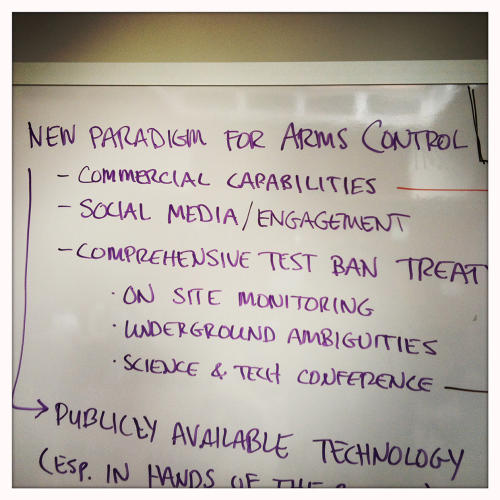

(47)

